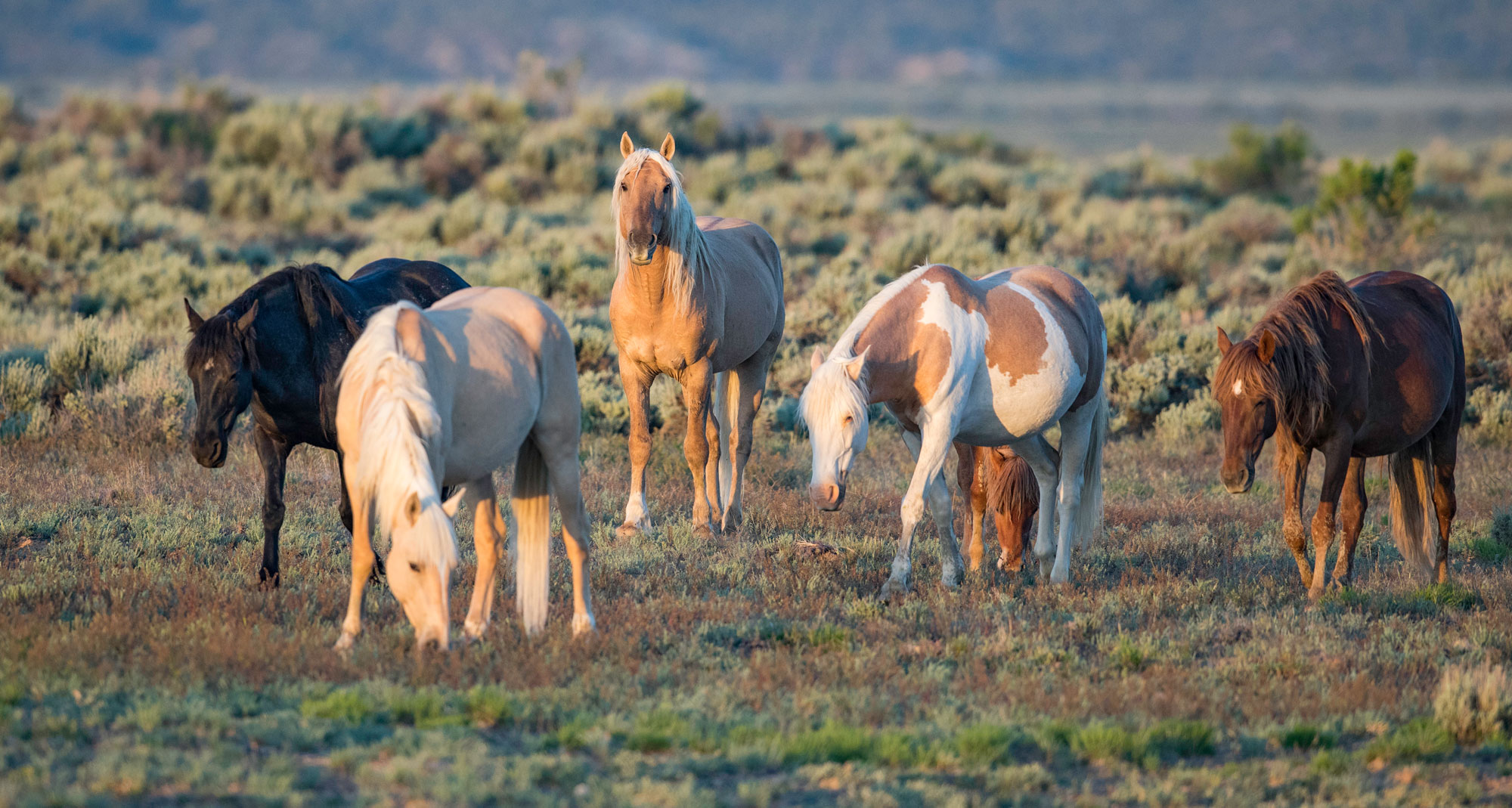Wild Horses
Wild horses still live wild and free on our public lands in ten Western states: Arizona, California, Colorado, Montana, Nevada, New Mexico, Oregon, Utah, Washington and Wyoming. These public lands are managed by the Bureau of Land Management and the Forest Service.
At the time the 1971 Wild Free-Roaming Horses and Burros Act was passed, wild horses and burros were found on 53 million acres. Now in 2018, over 22 million of these acres have been zeroed out and lost to wild horses and burros:
And our wild horses are losing ground every single day. Exactly how many wild horses remain on our public lands is uncertain since the BLM does not allow an independent agency to do its population counts. Population numbers are inflated artificially, sometimes showing as much as a 200 – 400 percent increase in one year, and these numbers are used to justify removing wild horses and burros from their homes and their families in deadly and dangerous roundups.
I have observed and documented 14 roundups in three states over the past 14 years. The BLM uses an independent contractor, usually Cattoor Livestock Roundup Company who fly helicopters behind wild horses to panic them into running toward a trap. Then, a “Judas” horse(s) is released and the horses follow him into the trap. They separate stallions from mares, foals from their mothers and then ship the horses in large and small livestock trailers to short term holding facilities where they are “processed.” The stallions are gelded, all mares and stallions and foals over 6 months old are given a unique freeze brand, and they are given shots. Many die during and after the roundup.
The young horses are offered for adoption. The horses over 10 years old can be sold without limitation, and most of them are shipped to long term holding facilities, which can be pens at a feedlot, or large pastures. Most of them are in Kansas and Oklahoma, and the mares and geldings are separated.
The BLM spends most of its budget on rounding up and housing these wild horses, who belong on our public lands. Many of these over 46,000 thousand wild horses and burros are not even where the BLM say they are. Wild Horse Freedom Federation has a White Paper on this and many other issues regarding a complete failure to disclose information about our wild horses and burros:
One the issues facing wild horses is genetic viability in their Herd Management Areas. In order to maintain genetic viability, according to Dr. Gus Cothren, the leading geneticist on wild horses, 150 breeding age adults need to be in each population. Over 70% of the remaining 179 wild horse herds contain less than 150 breeding age adults. Some Herd Management Areas have an Appropriate Management Level of 40 or 50 wild horses. This is truly “Managing for Extinction.”
Wild Horses evolved on this continent and are a species native to North America. This has been proven scientifically:
Wild Horses deserve to be given the protections afforded to wildlife that is native to our country. They do not deserve to be treated as a feral pest, said to be overrunning and destroying our public lands. According to the 1971 Act, wild horses should be managed where they are fund and should be managed as the principle species in their Herd Management Areas. Yet they are only allocated 10% of the forage in these areas, while livestock grazing is allocated the lion share of the forage even in Herd Management Areas. Livestock Ranchers pay a fraction of what grazing costs on private land, with grazing fees at $1.40 per cow/calf pair per month. Despite this, many ranchers want all of the wild horses and burros that remain on our public lands to be removed. There are solutions available for controlling the population of wild horses. Some advocates recommend using birth control which calls for darting the mares every 1-2 years:
Other advocates recommend using Reserve Design, allowing the land and the horses to come into a dynamic balance:
There is almost universal agreement on what should be done with the estimated 46,000 wild horses kept in short and long term holding facilities – return them to the 22 million acres that have been taken away from wild horses. Let them live the rest of their lives wild and free, and save US taxpayers millions of dollars each year.
Wild horses do not belong to the BLM. They belong to you and me. They belong on our public lands. They should be managed humanely, and managed where they are found, in their homes, with their families. Roundups need to be stopped.
I recommend visiting our wild horses while they are still free. Here is a list of the Herd Management Areas in each state:
Currently, Congress is considering the 2018 and 2019 Budget for the United States, and the House of Representatives had voted to kill the 46,000 wild horses in holding as well as 44,000 wild horses currently on public lands that are considered to be “excess.” This in no way resembles “euthanasia,” putting a suffering animal out of its misery, but is instead simply killing or slaughter.
What can you do to help? Call your Senators and Representatives: https://www.usa.gov/elected-officials and tell them you want to see wild horses and burros live out their lives on our public lands and that you do not support killing them. Livestock grazing should be reduced in Wild Horse Herd Management Areas and wild horses should be managed on the range, not rounded up and removed. And the wild horses in holding should be returned to the lands that have been taken from them.

